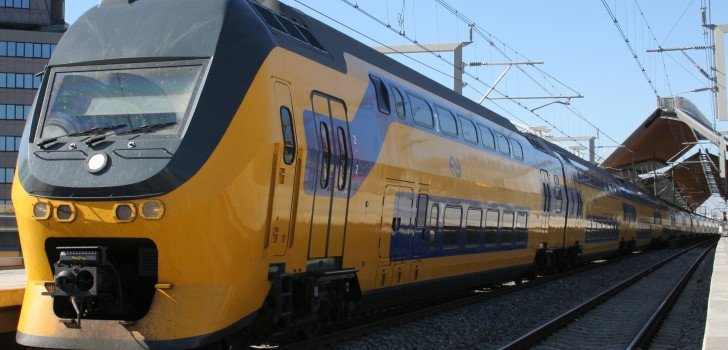Dutch commuters will soon have the ability to use one of the most environmentally friendly rail systems in Europe, which will use only electricity generated by wind farms. A new contract between Eneco and VIVENS will bring the portion of electricity provided to rail from wind energy from half up to 100% by 2018.
An account manager with Eneco, Michel Kerkhof, commented on the plan, “What makes this contract and partnership unique is that a whole sector decreases its CO2 footprint enormously and sets an example for other sectors to follow. Mobility is responsible for 20% of CO2 emissions in the Netherlands, and if we want to keep travelling, it is important that we do this without burdening the environment with CO2 and particulate matter. This contract offers all Dutch citizens the option to make a climate neutral trip, regardless of distance.”
Eneco is scheduled to provide 1.4 terawatt-hours per year of electricity for the rail system, which is equivalent to the total energy consumption by all the households in Amsterdam.
In order to proclaim that the rail system is 100% green, Eneco and VIVENS had to carefully select wind farms that were traceable so that the precise source of the power was known.
Promoting green energy worldwide was also a key motivation behind the project, so farms outside the Netherlands were required. A portion of the power will therefore come from Belgium and Scandinavia.
Eneco has pursued a similar initiative with Google by providing its data centers with power from wind farms in Eemshaven, located in the northern part of the country.
The VIVENS group includes Netherlands Railways, which is one of the main players in green energy travel, having cut the energy consumed per mile of travel by 30% since 2005 through improvements in efficiency. In so doing, they have been able to keep ticket prices competitive even though wind energy does cost more to produce than traditional sources.
The move to green energy is more than a nice sentiment for the Dutch. In June a court in The Hague issued a declaration that the Netherlands must cut its emissions by one quarter within five years. The case marked the increasing use of legal channels to compel environmental responsibility.
Such projects are well-suited to Europe, with its extensive network of rail transport. In the U.S., energy sourced from wind and solar has to contend not only with the increased price of these technologies, but also the lack of a suitable electrical grid to transmit the power, thanks to the vast size of the country.
Stay Connected